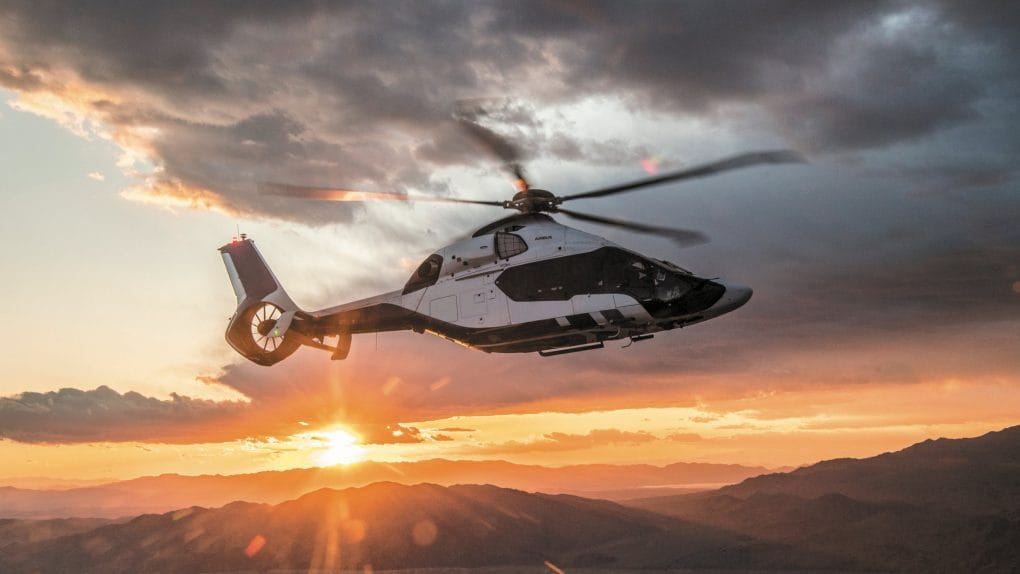Airbus is an aerospace titan most famous for its planes, but it makes helicopters too. In fact, the corporation’s Airbus Helicopters division is the largest helicopter manufacturer in the world. Its products fulfil the needs of military and civil operators all around the globe, including in hazardous and demanding circumstances such as firefighting and search-and-rescue.
Although helicopters are typically utility vehicles and hence judged by pure numbers and performance, Airbus Helicopters reserves one line-up for those who are more interested in the passenger experience. This is the Airbus Corporate Helicopters (ACH) sub-brand, which, as implied by the name, caters to private individuals who need to combine the unique functionality and efficiency of a helicopter, with some of the comforts and luxuries that they are used to.
The newest Airbus Helicopters platform is the H160, which received certification in 2020. The Airbus Corporate Helicopters version is the ACH160, where it is currently the second-largest offering—though still classed as a medium helicopter. It has a maximum cruise speed of 155 knots (285km/h) and a range of 460nm (850km), meaning it could do the length of Peninsular Malaysia without trouble and, for example, Singapore to Kuching, or to Thailand or Indonesia. Its interiors can be specified under two broad categories: Line, which is similar to a standard frame with finer appointments, and Exclusive, which adds numerous modifications primarily with soundproofing in mind. The latter includes an additional cocoon-like enclosure for the passenger cabin, isolating it from the pilot seats and from noise at large.
View more of the interiors of the ACH160
The ACH160 Exclusive layout can seat a maximum of eight passengers, but six is more comfortable; four would be even more so, with armchair style seats and a configurable module between each pair that could be for storage—or a champagne cooler. A customisation programme offers varying options of leather, fabrics and vegan materials. The cabin is a spacious one, with up to 20 per cent greater volume per passenger compared with previous generation medium twin helicopters. The windows are particularly large—up to 35 per cent larger than its competitors—and equipped with electrochromic tinting. This all adds up to the ACH160 being potentially one of the most pleasant rotorcraft cabins in the sky.
It is aided in this regard by the H160 platform itself, which is an incredibly advanced piece of machinery with 68 patents involved in its design. It is exceptionally smooth and quiet in the air, has a very fast start-up and shut-down time, and an efficient and effective air-conditioning system. It also has one of the most advanced avionics suites available, equipped with sophisticated sensors that are able to communicate warnings, and autopilot systems that can correct itself out of stall situations. These systems dramatically reduces pilot workload—which, in turn, reduces the chances of an accident.
Thomas Zeman (pictured above), head of sales and marketing, Asia-Pacific for Airbus Helicopters, considers Malaysia a very significant market in the region. There is particular potential for private and business aviation because of the country’s strong economic and industrial segments, but also because the H160 is well-positioned to replace older helicopters that are still in use. “We see that the H160, with its new design, its new philosophy, is getting a lot of interest in the market,” he says. “We see a bright future for the H160 in Malaysia.” He considers it a flagship, but the ACH banner alone currently has another five product offerings that can address a wide variety of roles.
Zeman notes there are three principal types of private helicopter use. The first, popular in countries such as the United States and Australia, is that of pilot-owners, which is not very common in the region. “But you have corporate use, obviously. In places such as Kuala Lumpur, where you have highly congested urban configurations, it’s a big advantage if you want to efficiently move from point A to point B,” he says. “Kuala Lumpur is an amazing place for that because you can fly in the city, which is not the case everywhere.” He has also observed that the city is quite well-equipped in terms of helipads. “That makes it very, very convenient for corporations to move their executives fast and efficiently,” Zeman says. “You don’t waste time, and it’s safe, secure, quick and efficient. You maximise business.”
The third type of owner is the private individual, who will likely also use it for business, but on weekends can, for example, take the family straight to a secluded island resort. “Quick, point-to-point, exclusive travel, with the ability to reach areas with limited infrastructure,” Zeman sums up. “That’s why helicopters are particularly appealing in the region.”










